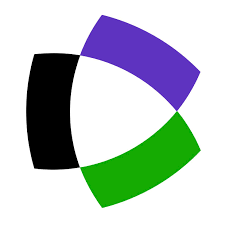Research Articles
Issue Editorial Board







 Web
Web




 Web
Web



Aim & Scope
OANNES is an international, scientific, open access periodical published in accordance with independent, unbiased, and double-blinded peer-review principles. OANNES is published twice a year, in March and September. Publication language is British English.
All expenses of the journal are covered by the publisher. No fees are requested from the authors at any point throughout the evaluation and publication process. All manuscripts must be submitted via the online submission system, which is available at https://dergipark.org.tr/en/pub/oannes The journal guidelines, technical information, and the required forms are available on the journal’s web page.
Statements or opinions expressed in the manuscripts published in the journal reflect the views of the author(s) and not the opinions of the editors, editorial board, and/or publisher; the editors, editorial board, and publisher disclaim any responsibility or liability for such materials.
OANNES is an open access publication and the journal’s publication model is based on Budapest Open Access Initiative (BOAI) declaration. Journal’s archive is available online, free of charge at https://dergipark.org.tr/en/pub/oannes OANNES's content is licensed under a Creative Commons Attribution-NonCommercial 4.0 International License (CC BY NC).
OANNES; publishes research articles and compilation articles covering the fields of Ancient History, Archeology, Ancient Languages and Cultures related to national, regional and world history.
The editorial and publication processes of the journal are shaped in accordance with the guidelines of the International Committee of Medical Journal Editors (ICMJE), World Association of Medical Editors (WAME), Council of Science Editors (CSE), Committee on Publication Ethics (COPE), European Association of Science Editors (EASE), and National Information Standards Organization (NISO). The journal is in conformity with the Principles of Transparency and Best Practice in Scholarly Publishing (doaj.org/bestpractice).
OANNES is currently indexed in TÜBİTAK ULAKBİM TR Dizin, ERIH Plus, Index Copernicus, ResearchBib, CiteFactor, SIS (Scientific Index Services), DRJI, and Asos Indeks.
Author Guidelines
Scientific articles on Ancient History, Archeology and Ancient Languages and Cultures are published in Oannes Journal. Manuscripts submitted to Oannes Journal are evaluated by at least two blinded peer-review. Manuscripts that do not receive a positive report from both referees are not published. In case of a positive or negative report, the article is sent to a third referee. The first evaluation period of the referees is about 3 weeks. However, this period may be extended depending on the subject of the study. Oannes Journal accepts manuscripts only written in British English language. Manuscripts submitted to the journal should be between 4,000 and 10,000 words, including appendices, and the count in block citations should not exceed 10% of the total word count of the manuscripts. As a result of the preliminary examination, the works that do not comply with the Writing and Publication Principles of Oannes Journal are returned to be corrected by the author. Submission of the work to Oannes Journal is considered an application for publication. No royalties are paid for the articles. The author(s) of the manuscripts sent to the journal accept that they do not violate any copyright of a private, legal or third party. In addition, the authors are deemed to have accepted that the submitted work is not intended for any defamation, attrition or violating the privacy of any person's private life. The editorial board of Oannes Journal can make any changes it deems necessary to ensure that the Turkish and English titles of the articles are understood. Along with the title, authors should include an abstract stating the main thesis of the article and their original contribution to the field. Title and abstract should be in Turkish and English. Abstracts should be between 200 - 250 words and all articles should have an Extended Abstract in Turkish of at least 700 words. In addition, authors should include Turkish and English keywords of 5 words in order to index the articles. In the works sent to Oannes Journal, information such as the name of the author, his title, the institution where he works and the e-mail address where he can be reached should not be included. In addition, authors should remove the auto-added author information in the MS Office program. Authors are obliged to notify the editors of their ORCID ID numbers at the time of publication of the article. After the studies submitted to Oannes Journal are sent from the Dergipark page, the referee process can be followed from the same page. After this stage, it is necessary to wait for the reports from the referees to make the corrections. The author should upload the work that he has corrected upon the request of the referees to the page where the report of the referee requesting correction. Studies submitted to Oannes Journal must not have been previously published elsewhere or be under evaluation elsewhere at the same time. Similarity rates in manuscripts should not exceed 10%, excluding references, block quotes and footnotes.
WRITING RULES
1. Manuscripts should be written in Microsoft Word program and page dimensions should be arranged as follows.
Paper Size A4 Vertical
Top Margin 2 cm
Bottom Margin 2 cm
Left Margin 2 cm
Right Margin 2 cm
Paragraph Head 0,5 cm
Block Quote Left and Right 0,5 cm indented
Font Calibri Light
Font Style Normal
Text Size 11
English and Turkish Abstracts Text Size 11
Extended Abstract Text Size 9,5
Block Quote 9,5
Line gap 6 nk (After)
Line gap Single (1)
2. Details such as page numbers, headers and footers should not be included in the manuscripts.
3. Only the first letters of each word of the headings in the article should be capitalized, no other formatting should be included.
4. In terms of spelling and punctuation, the Spelling Guide of the Turkish Language Association should be taken as a basis, except for special cases necessitated by the article or subject.
REFERENCE GUIDE
Manuscripts submitted for OANNES Journal must be written according to APA7 edition citation and bibliography system. References in footnotes should be given in the References section at the end of the manuscripts, together with their clear and detailed tags. In references to the works of the same author published in the same year, a lowercase letter such as a / b / c should be written next to the publication date. While the publications with three or more authors are shown in the footnote, only the first two authors should be given and abbreviations should be used for other authors. However, the names of all authors should be included in the bibliography.
Examples of Citation:
Single Author: Author Surname, Year, p/pp. …)
(Sidwell, 2010, p. 206)
(Sidwell, 2010, pp. 206-210)
Double Author: (Author A Surname & Author B Surname, Year, p/pp. …)
(Ekman & Friesen, 2003, p. 78.)
(Ekman & Friesen, 2003, pp. 78-98)
More than Two Authors: (Author A Surname, Author B Surname, & Author C Surname, Year, p/pp. …)
(Ekman, Friesen & Hager, 1978, p. 61.)
(Ekman, Friesen & Hager, 1978, pp. 61-66)
Two Surnamed Authors:
(Santos-García & Velasco Rodríguez, 2020, p. 55)
(Santos-García & Velasco Rodríguez, 2020, pp. 55-58)
• Do not change the author's preferred capitalization. ( hooks, b. , van der Waal, P. N.)
• Do not use abbreviations when citing a group of authors.
Right: National Institute of Mental Health.
Incorrect: National Institute of Mental Health (NIMH).
Incorrect: NIMH.
Anonymous Authors:
For a missing author, do not use "Anonymous" as the author unless the work is actually signed as "Anonymous". If the work is signed "Anonymous", use "Anonymous" in the reference and in-text citation.
Reference:
Anonymous. (2017). Stories from my time as a spy. Bond Publishers.
Citation:
Parenthetical citation: (Anonymous, 2017)
Anonymous citation: Anonymous (2017)
Studies with Legal Authors
If a group/legal entity (such as associations, companies, government agencies and other working groups) is mentioned as an author, the name of this group should be given in a very clear and understandable way in the reference in the text. The group name may be abbreviated in some cases. If the group name is long, if the abbreviation is clear to everyone, or if there is already a known abbreviation for the name, both the full and abbreviated form may be used in the first use, and only the abbreviation may be used in subsequent uses. If the group name is short, or if the abbreviation is not universally understood, the full name is used in all references.
If the reference is at the end of a sentence:
First reference: (Scientific and Technological Research Council of Turkey [TÜBİTAK], 2013)
Second and subsequent references: (TÜBİTAK, 2013)
If the reference is made in a sentence;
First reference: Scientific and Technological Research Council of Turkey (TÜBİTAK, 2013)
Second and subsequent references: TÜBİTAK (2013)
Authors with the Same Surname:
If there are two or more authors with the same surname in the bibliography, the first letter of the first author's name is used in all references, even if the years are different.
Yılmaz, A. (2009). Public policies and public library-emergent literacy relationship in the USA. Bilgi Dünyası, 10, 80-94. Retrieved from: http://www.bd.org.tr/
Yılmaz, B., Köse, E., & Korkut, Ş. (2008). A research on the reading habits of Hacettepe University and Bilkent University students. Türk Kütüphaneciliği, 23, 22-51. Retrieved from: http://www.tk.org.tr/
As mentioned in the studies of B. Yılmaz, Köse and Korkut (2008) and A. Yılmaz (2009).......
Examples of References:
If the book is:
Sapolsky, R. M. (2017). Behave: The biology of humans at our best and worst. Penguin Books.
If the article is:
Grady, J. S., Her, M., Moreno, G., Perez, C., & Yelinek, J. (2019). Emotions in storybooks: A comparison of storybooks that represent ethnic and racial groups in the United States. Psychology of Popular Media Culture, 8(3), 207–217. https://doi.org/10.1037/ppm0000185
If the conference paper is:
Duckworth, A. L., Quirk, A., Gallop, R., Hoyle, R. H., Kelly, D. R., & Matthews, M. D. (2019). Cognitive and noncognitive predictors of success. Proceedings of the National Academy of Sciences, USA, 116(47), 23499–23504.
If the translation is the book/e-book:
Sapolsky, R. M. (2017). Behave: The biology of humans at our best and worst. Penguin Books.
Svendsen, S., & Løber, L. (2020). The big picture/Academic writing: The one-hour guide (3rd digital ed.). Hans Reitzel Forlag. https://thebigpicture-academicwriting.digi.hansreitzel.dk/
Multi-volume sources:
Harris, K. R., Graham, S., & Urdan T. (Eds.). (2012). APA educational psychology handbook (Vols. 1–3). American Psychological Association.
The chapter in the edited book /e-book:
Aron, L., Botella, M. and Lubart, T. (2019). Culinary arts: Talent and its development. In RF Subotnik, P. Olszewski-Kubilius, & FC Worrell (Eds.), The psychology of high performance: Transforming human potential into domain-specific abilities (pp. 345-359). American Psychological Association. https://doi.org/10.1037/0000120-016
Dillard, JP (2020). Currents in persuasion studies. In MB Oliver, AA Raney, & J. Bryant (Eds.), Media effects: Advances in theory and research (4th ed., pp. 115-129). Routledge.
If the thesis:
Çelikbaş, E. (2016). 2005-2014 Parion Kazısı Metal (Bronz-Demir-Kurşun) Buluntuları. [Doctoral dissertation, Atatürk University].
See APA7 Edition guidelines for other considerations…
Ethical Principles and Publication Policy
Publication Ethics and Malpractice Statement
The authors are expected to submit researches that comply with the general ethical principles which include; scientific integrity, objectivity, collegiality, data integrity, institutional integrity and social responsibility.
All submissions are screened by a similarity detection software (iThenticate by CrossCheck) at any point during the peer-review or production process.Even if you are the author of the phrases or sentences, the text should not have unacceptable similarity with the previously published data.
When you are discussing others' (or your own) previous work, please make sure that you cite the material correctly in every instance.
OANNES-International Journal of Ancient History is committed to upholding the highest standards of publication ethics and pays regard to Principles of Transparency and Best Practice in Scholarly Publishing published by the Committee on Publication Ethics (COPE), the Directory of Open Access Journals (DOAJ), the Open Access Scholarly Publishers Association (OASPA), and the World Association of Medical Editors (WAME) on https://publicationethics.org/resources/guidelines-new/principles-transparency-and-best-practice-scholarly-publishing
All submissions must be original, unpublished (including as full text in conference proceedings), and not under the review of any other publication synchronously. Authors must ensure that submitted work is original. They must certify that the manuscript has not previously been published elsewhere or is not currently being considered for publication elsewhere, in any language. Applicable copyright laws and conventions must be followed. Copyright material (e.g. tables, figures or extensive quotations) must be reproduced only with appropriate permission and acknowledgement. Any work or words of other authors, contributors, or sources must be appropriately credited and referenced.
Each manuscript is reviewed by one of the editors and at least two referees under double-blind peer review process. Plagiarism, duplication, fraud authorship/denied authorship, research/data fabrication, salami slicing/salami publication, breaching of copyrights, prevailing conflict of interest are unnethical behaviors.
All manuscripts not in accordance with the accepted ethical standards will be removed from the publication. This also contains any possible malpractice discovered after the publication. In accordance with the code of conduct we will report any cases of suspected plagiarism or duplicate publishing. Editorial Board will follow and act in accordance with COPE guidelines.
Research Ethics
OANNES-International Journal of Ancient History adheres to the highest standards in research ethics and follows the principles of international research ethics as defined below. The authors are responsible for the compliance of the manuscripts with the ethical rules.
- Principles of integrity, quality and ransparency should be sustained in designing the research, reviewing the design and conducting the research.
- The research team and participants should be fully informed about the aim, methods, possible uses and requirements of the research and risks of participation in research.
- The confidentiality of the information provided by the research participants and the confidentiality of the respondents should be ensured. The research should be designed to protect the autonomy and dignity of the participants.
- Research participants should participate in the research voluntarily, not under any coercion.
- Any possible harm to participants must be avoided. The research should be planned in such a way that the participants are not at risk.
- The independence of research must be clear; and any conflict of interest or must be disclosed.
- In experimental studies with human subjects, written informed consent of the participants who decide to participate in the research must be obtained. In the case of children and those under wardship or with confirmed insanity, legal custodian’s assent must be obtained.
- If the study is to be carried out in any institution or organization, approval must be obtained from this institution or organization.
- In studies with human subject, it must be noted in the method’s section of the manuscript that the informed consent of the participants and ethics committee approval from the institution where the study has been conducted have been obtained.
Author's Responsibilities
All the authors of a submitted manuscript must have direct scientific and academic contribution to the manuscript. The author(s) of the original research articles is defined as a person who is significantly involved in “conceptualization and design of the study”, “collecting the data”, “analyzing the data”, “writing the manuscript”, “reviewing the manuscript with a critical perspective” and “planning/conducting the study of the manuscript and/or revising it”. Fund raising, data collection or supervision of the research group are not sufficient roles to be accepted as an author. The author(s) must meet all these criteria described above. The order of names in the author list of an article must be a co-decision and it must be indicated in the Copyright Agreement Form. The individuals who do not meet the authorship criteria but contributed to the study must take place in the acknowledgement section. Individuals providing technical support, assisting writing, providing a general support, providing material or financial support are examples to be indicated in acknowledgement section.
All authors must disclose all issues concerning financial relationship, conflict of interest, and competing interest that may potentially influence the results of the research or scientific judgment.
When an author discovers a significant error or inaccuracy in his/her own published paper, it is the author’s obligation to promptly cooperate with the Editor-in-Chief to provide retractions or corrections of mistakes. Similarity rates in manuscripts should not exceed 10%, excluding references, block quotes and footnotes.
Responsibility for the Editor and Reviewers
Editor-in-Chief evaluates manuscripts for their scientific content without regard to ethnic origin, gender, sexual orientation, citizenship, religious belief or political philosophy of the authors. He/She provides a fair double-blind peer review of the submitted articles for publication and ensures that all the information related to submitted manuscripts is kept as confidential before publishing.
Editor-in-Chief is responsible for the contents and overall quality of the publication. He/She must publish errata pages or make corrections when needed.
Editor-in-Chief does not allow any conflicts of interest between the authors, editors and reviewers. Only he has the full authority to assign a reviewer and is responsible for final decision for publication of the manuscripts in the Journal.
Reviewers must have no conflict of interest with respect to the research, the authors and/or the research funders. Their judgments must be objective.
Reviewers must ensure that all the information related to submitted manuscripts is kept as confidential and must report to the editor if they are aware of copyright infringement and plagiarism on the author’s side.
A reviewer who feels unqualified to review the topic of a manuscript or knows that its prompt review will be impossible should notify the editor and excuse himself from the review process.
The editor informs the reviewers that the manuscripts are confidential information and that this is a privileged interaction. The reviewers and editorial board cannot discuss the manuscripts with other persons. The anonymity of the referees must be ensured. In particular situations, the editor may share the review of one reviewer with other reviewers to clarify a particular point.
Copyrihts
The publishing rights of the published articles belong to OANNES Journal. Copyrights belong to the authors according to the Open Access Policy.
Price Policy
OANNES-International Journal of Ancient History is a free journal and there is no article submission/process management fee.
OANNES Journal is licensed under Creative Commons Attribution-NonCommercial 4.0 International License. (CC BY NC)
Only publications in the fields of Ancient History, Archeology and Ancient Languages and Cultures are accepted in OANNES Journal. Publications sent from other fields are not taken into consideration.
https://creativecommons.org/licenses/by-nc/4.0/deed.tr
